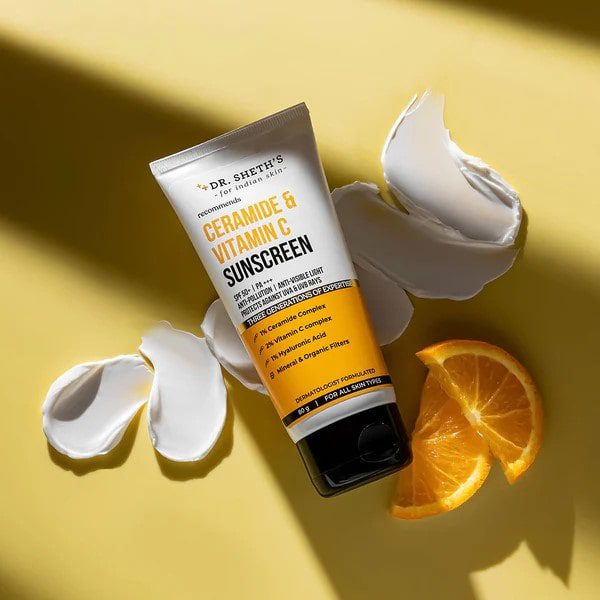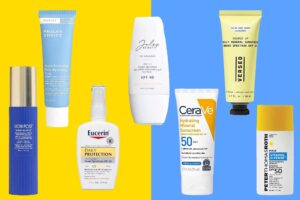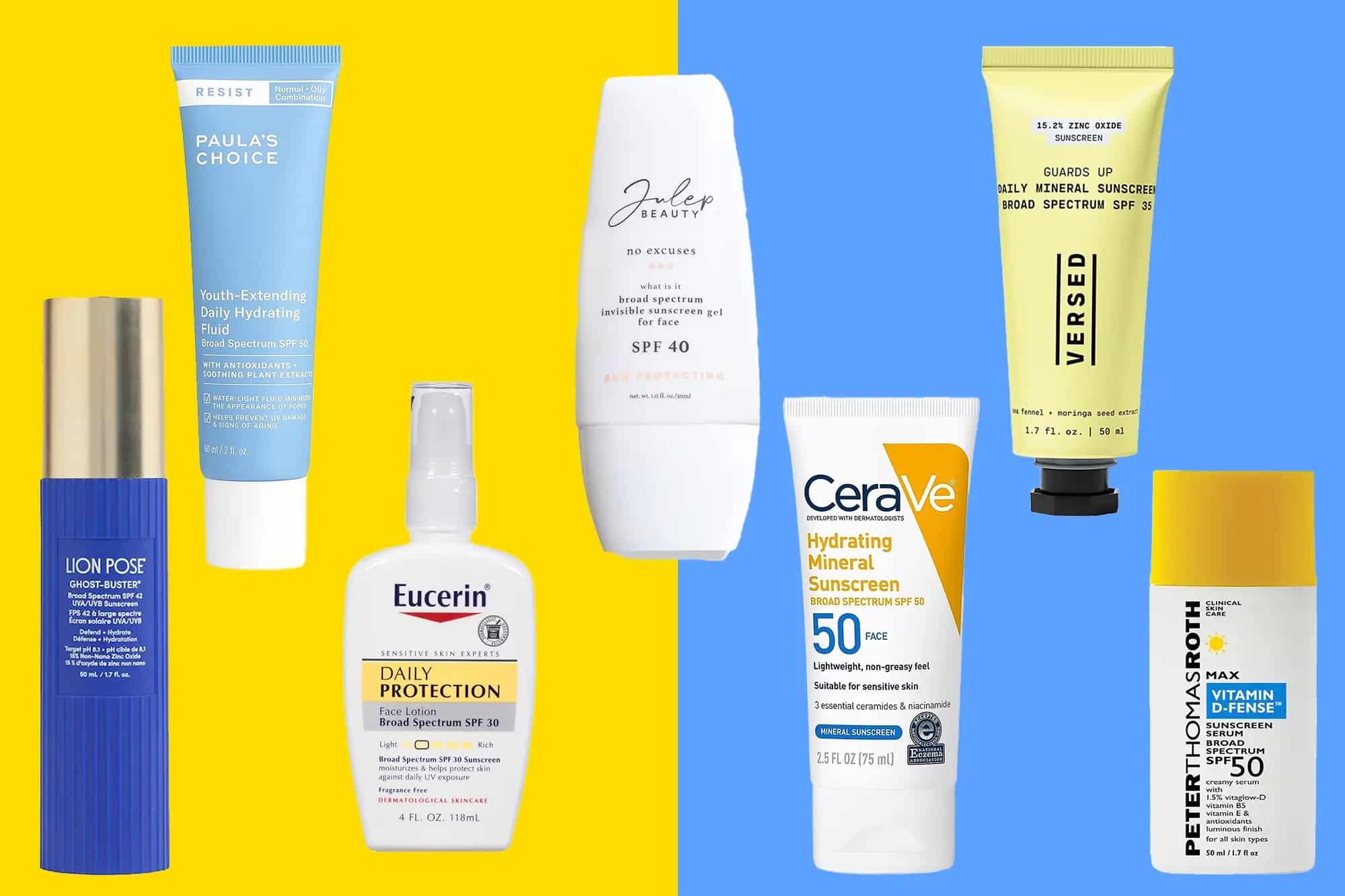The summer is heating up, and you’re preparing for a beach day. After searching through your drawer, you discover a sunscreen bottle that has been there since the previous year. Even though the bottle was past its expiration date, it seemed wasteful to discard it. I understand the sentiment—who would want to discard a product that could still be valuable? So, the query is, is it possible to use sunscreen that has expired? To make sure your skin is always protected from the sun, let’s delve deeper into this subject and learn about the facts, dangers, and potential solutions.
Understanding Sunscreen Expiration Dates
Expiration dates on sunscreen are more than simply a sales tactic. These dates represent the time frame within which the product’s efficacy and safety are guaranteed by the manufacturer. The active chemicals in sunscreen can break down after the expiration date, making it less effective in shielding your skin from damaging UV rays.
The Science Behind Sunscreen Expiration
UV protection is provided by sunscreens’ active components, which include zinc oxide, titanium dioxide, avobenzone, and oxybenzone. These substances’ effectiveness may decrease over time as a result of deterioration brought on by heat, light, and air exposure. Furthermore, the sunscreen’s preservatives, which stop bacteria from growing, may deteriorate and contaminate the product.
Risks of Using Expired Sunscreen
Using expired sunscreen can pose several risks, some of which can have serious consequences for your skin health.
-
Reduced UV Protection
The biggest danger of applying sunscreen that has expired is that your skin won’t be as protected from UV radiation. Sunscreen’s ability to block UVB and UVA rays may diminish with time due to the degradation of the active chemicals in the lotion. Your skin may be exposed to more UV rays as a result of this deterioration, thus raising your chance of getting sunburned. Long-term exposure to UV radiation without sufficient protection can cause skin damage, early aging, and an increased risk of skin cancer in addition to the immediate discomfort of sunburn. Because the sun’s UV rays are strong and unrelenting, it’s imperative to wear dependable sun protection.
-
Skin Irritation and Allergies
The preservatives and active chemicals in sunscreen may degrade and lose their stability as it matures. The new chemical substances that may arise from this breakdown process may not be well absorbed by your skin. When sunscreen expires, it can lead to some negative skin effects, including irritation, redness, and itching. These reactions may be much more severe and problematic for people who already have skin disorders such as rosacea or eczema, or who have sensitive skin. Using sunscreen outside of its recommended usage window is crucial since the last thing you want is to accidentally damage your skin while attempting to protect it.
-
Bacterial Contimination
When sunscreen expires, it can become a haven for bacteria and mold, particularly if it has been opened and used for a long time or has been exposed to heat or humidity. As a product age, the preservatives that stop bacterial development may become less efficient, which allows dangerous microbes to flourish. Applying sunscreen that has been tainted by mold or bacteria can cause skin infections and other dermatological problems, making it more difficult to maintain the health of your skin. These infections may occasionally necessitate medical attention, transforming what ought to be a standard preventative step into a cause of significant skin issues.
Factors Affecting Sunscreen Shelf Life
Numerous factors can affect sunscreen’s lifespan and effectiveness. By being aware of these variables, you can apply and store sunscreen more skillfully, giving your skin the most possible protection.
-
Storage Conditions
The degradation of sunscreen components is significantly influenced by heat, light, and humidity. The active ingredients in sunscreen may break down more quickly after extended exposure to these substances, decreasing the sunscreen’s effectiveness. Sunscreen is best kept out of direct sunlight and heat sources and kept in a cool, dry environment. For example, storing your sunscreen in a bathroom cabinet, out of direct sunlight, or in a shaded drawer will help it stay stable. Your sunscreen will likely deteriorate more quickly if it has been exposed to high temperatures, like being left in a hot car or freezing weather. A formulation may separate, undergo a textural change, or lose its protective qualities under these circumstances far before its expiration date.
-
Packaging
The duration and efficacy of sunscreen are significantly impacted by the way it is packaged. Products containing sunscreen that are packaged in opaque, airtight containers are typically more stable than those packaged in translucent or inadequately sealed bottles. The sunscreen’s opaque container shields it from light, which might hasten the active ingredient’s deterioration. The stability of the substance can be harmed by both air and moisture, which are both things that airtight containers help keep out. Because they reduce the amount of air and other impurities that are exposed each time the product is used, tubes and pumps are especially effective. On the other hand, because of repeated exposure to air and any pollutants introduced by fingers or applicators, sunscreen in jars or open-top containers may break down more quickly.
-
Formula Type
The stability and shelf life of sunscreen is also significantly influenced by the type of formula used. In general, mineral sunscreens are more stable than chemical sunscreens since they contain physical blockers like titanium dioxide and zinc oxide. In contrast to chemical filters, mineral sunscreens function by reflecting UV rays off the skin by forming a physical barrier. Additionally, the active chemicals in mineral sunscreens are less prone to deteriorate over time. But if they are not stored correctly, even mineral sunscreens might deteriorate. UV-absorbing chemical sunscreens have active components that are more prone to deterioration in the presence of heat, light, and air. Because these chemical compounds lose their effectiveness more quickly, preserving their protective qualities even more depends on careful storage.
How to Determine If Your Sunscreen Is Still Effect

If you’re unsure whether your sunscreen is still good to use, here are some signs to look out for.
-
Check the Appearance and Smell
A shift in the physical characteristics of sunscreen is one of the first clues that it might be over its expiration date. The color, texture, or smell of expired sunscreen may noticeably change over time. New sunscreen usually has a uniform tint and a homogeneous, smooth texture. Your sunscreen has deteriorated if it has turned discolored, turning brown, or yellow, or if the formulation looks to have divided into separate layers. Furthermore, the presence of an unpleasant or rancid smell suggests that the active chemicals and preservatives have degraded. It’s advisable to throw away the sunscreen right away if you see any of these changes because it probably won’t offer enough protection and might irritate your skin.
-
Perform a Patch Test
A quick and easy way to find out if your sunscreen is still safe to use on your skin is to do a patch test. Apply a small amount of sunscreen to a discrete region of your skin, like the behind of your ear or the inside of your forearm, to conduct a patch test. After using sunscreen for a minimum of twenty-four hours, keep an eye out for any indications of irritation, redness, itching, or rash. It is highly suggestive that the sunscreen has deteriorated and shouldn’t be utilized if your skin reacts adversely to it. A patch test can assist detect any negative reactions to the sunscreen’s chemicals even if there aren’t any obvious symptoms of deterioration, ensuring your skin stays healthy and protected.
-
Evaluate the Expiration Date
Sunscreen’s assured effectiveness is determined by the expiration date stated on the packaging. Although it’s usually not a good idea to use sunscreen that has passed its expiration date, there are a few things to keep in mind if you find yourself in a tight spot. A sunscreen that is just a few months past its expiration date might still provide some protection, but its effectiveness might be diminished. However, since the active components have probably severely deteriorated, applying sunscreen that is well over its expiration date—a year or more—poses a higher danger. It’s always safer to replace used sunscreen with new for optimal protection.
Alternatives to Expired Sunscreen
If you find that your sunscreen has expired, don’t worry—there are alternatives to ensure you stay protected from the sun.
- Get a Fresh Sunscreen: Purchasing a fresh bottle of sunscreen is the easiest way to solve this problem. This guarantees that the product you have is both safe to use and effective. For the best protection, look for broad-spectrum sunscreens with an SPF of 30 or greater.
- Put on Physical Sun Protection: You can shield your skin from the sun by using physical barriers in addition to sunscreen. Extra protection can be obtained by donning hats, sunglasses, and long sleeves, especially during the hottest parts of the day.
- Look for Shade: If at all feasible, seek shade to reduce the amount of time you spend in the sun. This is especially crucial around noon when the sun’s rays are at their greatest.
Related Blog:
How Often Should You Reapply Sunscreen?
Conclusion
Although it may be alluring to reuse outdated sunscreen to save money, it’s crucial to weigh the dangers involved. Inadequate UV protection, skin discomfort, and possible bacterial contamination might result from using sunscreen that has expired. Always check the expiration date, keep your sunscreen carefully, and think about alternatives if your sunscreen has run out of protection for your skin. You may enjoy the sun without risk and maintain the health of your skin for many years by following these steps.







